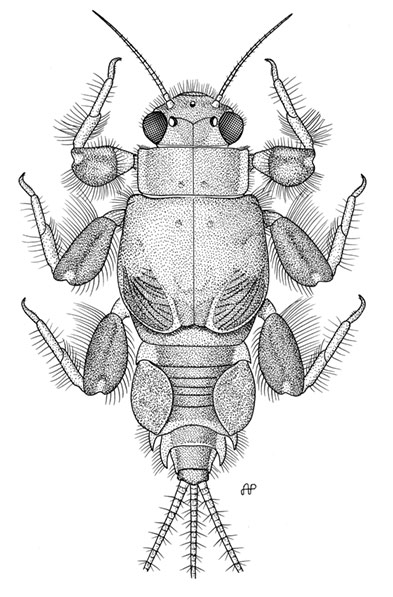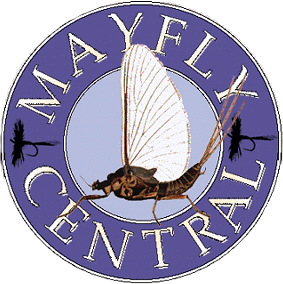Updating the Mayflies of Central America and the Caribbean
 Asioplax curiosa
Asioplax curiosaRio Tenorio, Costa Rica
Artist: Arwin Provonsha
What's New?
8 February 2022 update: Caenis diminuta latina is added back to the list of Central American species after it was accidentally deleted. A misspelling of Camelobaetidius mexicanus is added.
10 November 2021 update: A new species of Neohagenulus from the island of Hispaniola is added.
19 November 2020 update: Central American and Costa Rican species counts are updated. A new species and new records of Cloeodes species are added. The synonymy of Camelobaetidius musseri is corrected, updated and expanded.
27 March 2020 update: Kluge (2020. Zootaxa 4756(1): 1-142) recently made major contributions to the systematics of the genus Thraulodes (Leptophlebiidae).
14 January 2020 statement: Several genera included in our current lists are recognized either as subgenera or as junior synonyms of other genera in Burian SK. 2019. Chapter 13 Ephemeroptera. Pp. 263-339. In: R. W. Merritt, K.W. Cummins, and M.B. Berg. (eds.). An Introduction to the Aquatic Insects of North America., 5th Edition. Kendall Hunt Publishing, Company, Dubuque, Iowa, 1480 pp. However, the new or reinstated genus-species combinations that would result from these synonymies are not listed in this chapter. Genus-species combinations are listed on Mayfly Central only if they have been explicitly stated in recent, reputable, peer-reviewed publications and only if they follow the International Code of Zoological Nomenclature. The synonymies referenced above created some unpublished combinations in Afghanurus, Stenonema, and Tricorythodes. If only published combinations in these genera were listed here, then inconsistent genus concepts would be followed in the North and Central American lists. Therefore, at this time, we are not listing species of Ableptemetes, Homoleptohyphes, Tricoryhyphes, and Asioplax in Tricorythodes; we are not listing species of Maccaffertium in Stenonema; and we are not listing species of Ecdyonurus and Nixe in Afghanurus. The status of the genus Dentatella has been part of a long-running academic debate. Until a more thorough study of Eurylophella phylogenetics is completed, Dentatella is recognized for D. coxalis (McDunnough, 1926). A neighbor-joining tree based on DNA barcode data [see Webb et al. 2012. PLoS One 7(5): Figure S1] was used to justify the most recent synonymy of Eurylophella and Dentatella in the chapter referenced above. This tree is an unreliable proxy for phylogenetic reconstruction, probably due to long branch attraction; for example, some other species of Ephemerellidae closely related to Dentatella nest within the family Leptophlebiidae [see again Webb et al. 2012. PLoS One 7(5): Figure S1].
Updates
Current Update: February 8, 2022
Former Updates:
- November 10, 2021
- November 19, 2020
- March 27, 2020
- January 21, 2020
- March 11, 2019
- November 15, 2018
- September 5, 2018
- September 20, 2017
- September 7, 2017
- April 18, 2017
- July 8, 2015
- February 3, 2015
- June 17, 2014
- July 10, 2013
- March 12, 2012
- February 8, 2011
- March 8, 2010
- October 14, 2008
- July 19, 2005
- January 14, 2005
- July 14, 2004
- December 12, 2003
- February 2, 2001
- May 12, 2000
- March 27, 2000
- July 8, 1999
- January 10, 1997
- May 20, 1996
- March 15, 1996

